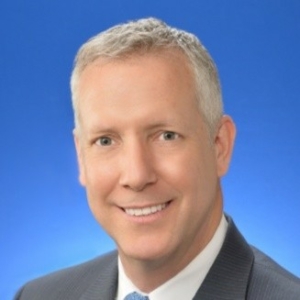In this second of two podcast episodes, Pete Piliero, MD, VP & Head, Medical Affairs Americas, GSK Consumer Healthcare, moderates a discussion on contributions Medical Affairs makes to Asset Strategic Plans and Time Horizon, Refreshing, and Resourcing of a Medical Affairs Plan.

MODERATOR: Pete Piliero, MD

PANELIST: Tina Beaman, JD

PANELIST: Ed Gudaitis

PANELIST: Keith Johns

PANELIST: Maria Rivas
Following is an automated transcription provided by otter.ai. Please excuse inaccuracies.
Pete Piliero
Welcome to the Medical Affairs Professional Society’s Medical Strategy and Launch Excellence Focus Area Working Group’s second in a two-part podcast series on Executive Leadership Perspectives on Medical Affairs Strategic Planning. The views expressed in this recording are those of the individuals and do not necessarily reflect the opinions of MAPS or the companies with which they are affiliated. In the second podcast, we will discuss global regional and local planning approach to Medical Affairs strategic planning for rare disease and oncology and compliance considerations. I’m currently the VP and head of Medical Affairs Americas at GSK consumer healthcare. And I also co-lead the MAPS Medical Strategy and Launch Excellence Focus Area Working Group with Monica de Abadol and I am on the MAPS Board of Directors.
The podcast objectives are the following: First, understand cross-functional pharma industry executives perspectives on various aspects of Medical Affairs strategic planning. Second, learn how to ensure Medical Affairs strategic planning is done compliantly while still being collaborative, and finally understand some of the differences and nuances of Medical Affairs strategic planning for oncology and rare diseases.
In March 2020, at the MAPS annual meeting in Miami, a panel of Medical Affairs executives was convened to discuss medical fair’s strategic planning. Our panelists today are Dr. Maria Rivas, CMO and SVP at EMD Serono/Merck KGaA, Keith John’s VP of Global Marketing and Alliance Management at Eli Lilly and company, Ed Gudaitas, President and CEO of Acerus Pharma, and Tina Beaman, VP and Chief Compliance Officer at Karyopharm Therapeutics.
So let’s get started!
Maria, what are best practices to ensure that the global medical fair strategic plan really meets the needs of the affiliates and the whole company?
Maria Rivas
In my opinion, the best practices where, you know, at least countries that have a significant cohort of the patients we expect to be using this drug should be part of how we think about, you know, both the strategic imperatives of the brand and how they apply to those countries, and then to really co develop to a degree some of the tactical plans. So I would want the local and regional key region key local countries to participate. You know, we have to be practical, not everybody can be around the table, but at least representative areas or geographies that that represent different types maybe or, or variations of patient populations.
Pete Piliero
Keith, you’re in global marketing? What are you seeing that works well?
Keith Johns
Now one thing that we do, before we kick off, the global brand planning process is each brand jointly with the Medical Affairs lead for the brand and the commercial lead for the brand, develop a very brief questionnaire, there’s a lot of rigor that’s put around that it can be no more than seven questions. It’s a mix of commercial and Medical Affairs, that go out to all our key affiliates and key affiliates or either if it’s a pre launch phase affiliates that are launching sooner. And we also tried to get feedback across the globe. So making sure we’re incorporating feedback from our colleagues in Asia where lower doses or different doses may be an implication for the brand, as well as you know, major Europe and other parts of the world. So that is the first part of our processes to get that input upfront and early. engage them like clarifying Any questions before we start the plan. And then as we start as we work through the plan, I always encourage our teams to do check in we have leadership check ins along the way, with myself and our Vice President of Medical Affairs through the process, but we often in those check ins are asking that they go back and ensure that the key affiliates are aligned to geographies are aligned with how the plan is progressing. So if you do that, that in the end, you get a brand plan that is absolutely a better brand plan. And then you also know that it’s well endorsed and online. Now you always have the challenges sometimes when you release the brand plan to the affiliates it you know someone will have dissatisfaction or have a concern. But you’re you know, following that process, we tend to have a lot more success than if you just develop an isolation and roll it out.
Pete Piliero
Thanks, Keith. Ed, do you encourage or discourage localization of a global plan?
Ed Gudaitis
Yeah, I mean, I my theory is If we did our homework well, those very, you know, major changes to a strategy or tactical element of the medical plan should already have been reflected in a global plan. Otherwise, in my opinion, the global team is living in its own castle, you know, I very facile and not really paying attention to the market needs and the patient needs. How there’s sometimes on usually us is one example China is another Japan to a degree that requires some, some tailoring, but usually I prefer that the tailoring be at the tactical level. And definitely my opinion, the scientific tenets that support that entire Medical Affairs need to be extremely well aligned, and should not be changed, otherwise, you’re really changing company position. And that can get the company into scientific reputational issues. Because Maria says if you’ve if you produce the global plan, with the right amount of input, it should reflect global practice, there will be marginal changes. But again, those are marginal changes. And we live in a sort of global scientific society and a global scientific exchange network. Now. You can’t You can’t to tinker at the margins. You can’t do that anymore.
Pete Piliero
Tina, are there any compliance considerations in regard to this aspect of planning,
Tina Beaman
There is one asterisk that I would add to this one. And that is just be sensitive to you know, if there are particular countries or areas where you might have an open investigation, or you know, some particular challenges with the regulatory environment in that country, I would say keep your legal partners very close to you. Because there may be a need to add clarifying language on certain aspects of the plan. Hey, we’re not doing this in Turkey. Yeah, this is not our tactic for Japan, just to make it very clear, because at the end of the day, your strategic plan is a discoverable document. And it is evidence of what your intent is, that’s going to underline all your all of your activities for the year or, you know, for the duration of the plan. So you want to make sure that that evidence of intent, marries up to wherever you’re utilizing that plan. So that’s my one asterisk.
Pete Piliero
That’s a wonderful tip. Actually, that’s a that’s a really good one. Let’s now move on to the approach to Medical Affairs, strategic planning for rare disease and oncology assets. And just a reminder that strategic planning is not a check the box exercise, it’s something that has to be very thoughtful, and that you constantly evaluate, especially in these two areas. Maria, can you elaborate,
Maria Rivas
I have not worked in small companies with rare disease, focus, but I have worked in large companies with rare indications, you know, it’s very uncommon, immunologic or oncologic diseases. And what I can say is in this case, and I believe in this firmly Medical Affairs needs to to take on the lead role in in that strategy, because it is so patient focused on oriented, there are so many, there’s few degrees of freedom in which commercial can operate, operationalize a plan, but medical has more tools that it’s available to be able to connect with the patient community in these cases, to Keith’s point, very closely with, with colleagues in policy and patient advocacy. But here medical really needs to be the leading voice and very well crafted strategic imperatives because they need to be exquisitely patient oriented to be effective and help the brand as well.
Pete Piliero
Tina, what is your perspective?
Tina Beaman
Over the course of my career, I’ve worked primarily in oncology, but I have spent some time in rare disease. And I’ve spent some time in primary care. And what I will say is across the various therapeutic areas, there are differences in terms of what that strategic plan needs to look like. And you know, in my career as the legal or compliance either business partner and now as a Chief Compliance Officer, I’ve heard from many folks, well, oncology is different. Well, rare disease is different. And I will affirm for all of you today that yes, I agree with you. There are differences in these therapeutic areas such that the substance of your plan will have to be different. The challenges are different. For example, in oncology, you mentioned the ever changing landscape and you know, you might have an incremental increase in PFS that felt like a meaningful difference for patients one day and then something else happens. You know, a new date is announced at a congress and now it’s not as meaningful. In rare disease. Your challenge may be diagnosis and patient identification and how do you help hcps identify this thing that they’ve never seen before. And medical has an important role in all of those challenges, which can be very different to therapeutic area to therapeutic area. However, what your legal and legal and compliance business partners would want me to say is that the rules are not That’s very true. So in terms of your planning process, again, make sure that you involve your legal and compliance functions to make sure that as you’re trying to navigate these different challenges, you have someone right there with you helping to identify areas of risk or areas of concern and helping you to come up with solutions for tactics that might be problematic. But maybe there’s another way to help you meet that gap. So, yes, there’s absolutely a need for flexibility in terms of the planning process, the substance will be different. But the controls and the process has to be consistent.
Pete Piliero
Keith, do you have anything else to add?
Keith Johns
Um, it’s clear that oncology in certain spaces, the science moves quicker. But I would say as a general principle, you always have to follow the science because things do change and how diseases and treatments are offered and considered, you know, it changes as the science changes. But I think another concept that irrespective of the speed of change with any, within any one disease state, is what is the archetype in which you are launching, if you’re launching a fifth to market DLP one, that’s a very different archetypes. And if you are launching into a, you know, your first and it’s a rare disease, and it’s not well known and well established. In both cases, Medical Affairs plays a critical role in the success of that of that brand in reaching as many patients as possible that are appropriate. But at the same time, I think you have to know what position you’re playing, because if you’re playing one of those free market archetypes, the role of Medical Affairs as a play is absolutely paramount. And it probably has to start soon. And that’s probably something that we don’t do well. In, is anticipating, you know, this the time that it takes to create a market to appropriately educate around a new market, particularly in the rare disease space.
Pete Piliero
A key message for those of you who may be at smaller companies, such as biotechs, where you may be a Medical Affairs team of one or two professionals, is to advocate for resources that you can, so that you can start earlier to develop the scientific landscape. Because if you wait too long, you’re going to be constantly trying to play catch up. And we will wrap up this podcast with a conversation about compliance considerations in Medical Affairs strategic planning. Tina, tell us about what appropriate collaboration is when aligning a medical fair strategy or brand strategy in general.
Tina Beaman
So in terms of the development of your overarching brand strategy, that can and should be cross functional, in order to make sure that your therapeutic area is aligned on the important issues that will ultimately benefit patients, you have to work together you have to speak the same language, you have to be marching towards the same objective. Having said that, of course, there are certain areas which are aligned to the plan, but must be owned by medical. And we all know know what those areas are, for example, you know, evaluation of CME grant proposals, evaluation of investigator sponsored research. So you know, there are several areas scientific exchange for sure. So there are several areas where the ownership of those tactics need to fall squarely within the medical function. However, they can absolutely be aligned with the overarching strategy that’s developed cross functionally.
Pete Piliero
So Tina, to wrap up, are there tips and tricks or policies or approaches that you’ve used to help manage that challenge?
Tina Beaman
Absolutely. So a lot of this is going to depend on the size of your organization and the maturity of your organization. Because frankly, you know, I’ve worked at very large companies, and I’m now at a company that is essentially a startup that has just launched their first drug A few months ago with 400 people. And I will tell you what the process looks like in those companies are very different. But having said that, the underlying principles remain the same. So what I would say in terms of tips and tricks, you know, certainly involve your legal or compliance business partners early on in the process, because to the extent that you don’t have a policy that will help determine where that collaboration is appropriate and where it’s not, they can help you and you know, make sure that you don’t footfall in the development of your plan and have your strategy. Another tip, or trick I would say is if a policy does exist in terms of interactions, and some companies have them, review it before you start the planning process, just so that you’re aware of who needs to be around the table, what the timing looks like, and what the review process and strategy looks like. And third, what I would say is, and I will say this a lot because I think I said it a few times, our very first day if you start with your truenorth In terms of the role in the value of Medical Affairs, you know, are you developing? Are you participating in evidence generation? Are you disseminating evidence? Are you participating in scientific exchange? I mean are you have to look at the core value that Medical Affairs provides to the organization and tie both your strategy and your tactics to those core issues. And if you start with that, in that place, you’re going to wind up in the right spot.
Pete Piliero
I again want to thank our panelists for engaging in this important conversation and providing their perspectives on strategic planning, and hope you all walk away with valuable guidance to help with your strategic planning. This has been the second of a two part podcast on executive leadership perspectives on medical fair’s strategic planning. If you are a MAPS member, thank you for your support of MAPS. If you’re not yet a MAPS member and would like access to additional resources in this area, please visit the MAPS website to explore joining at Medical Affairs.org backslash membership
Transcribed by https://otter.ai






